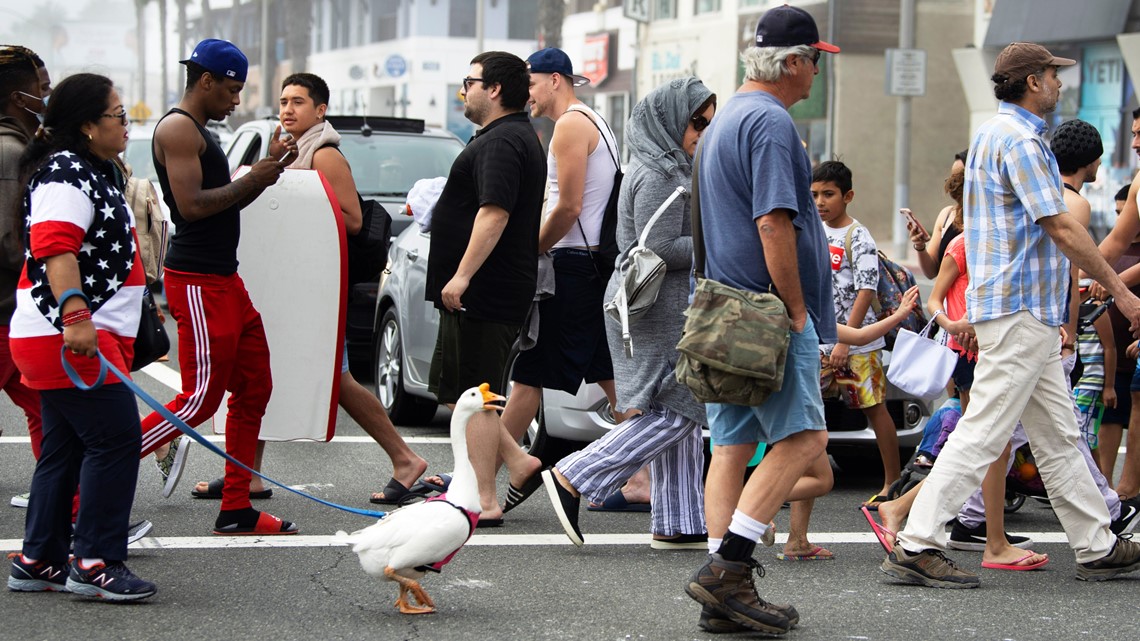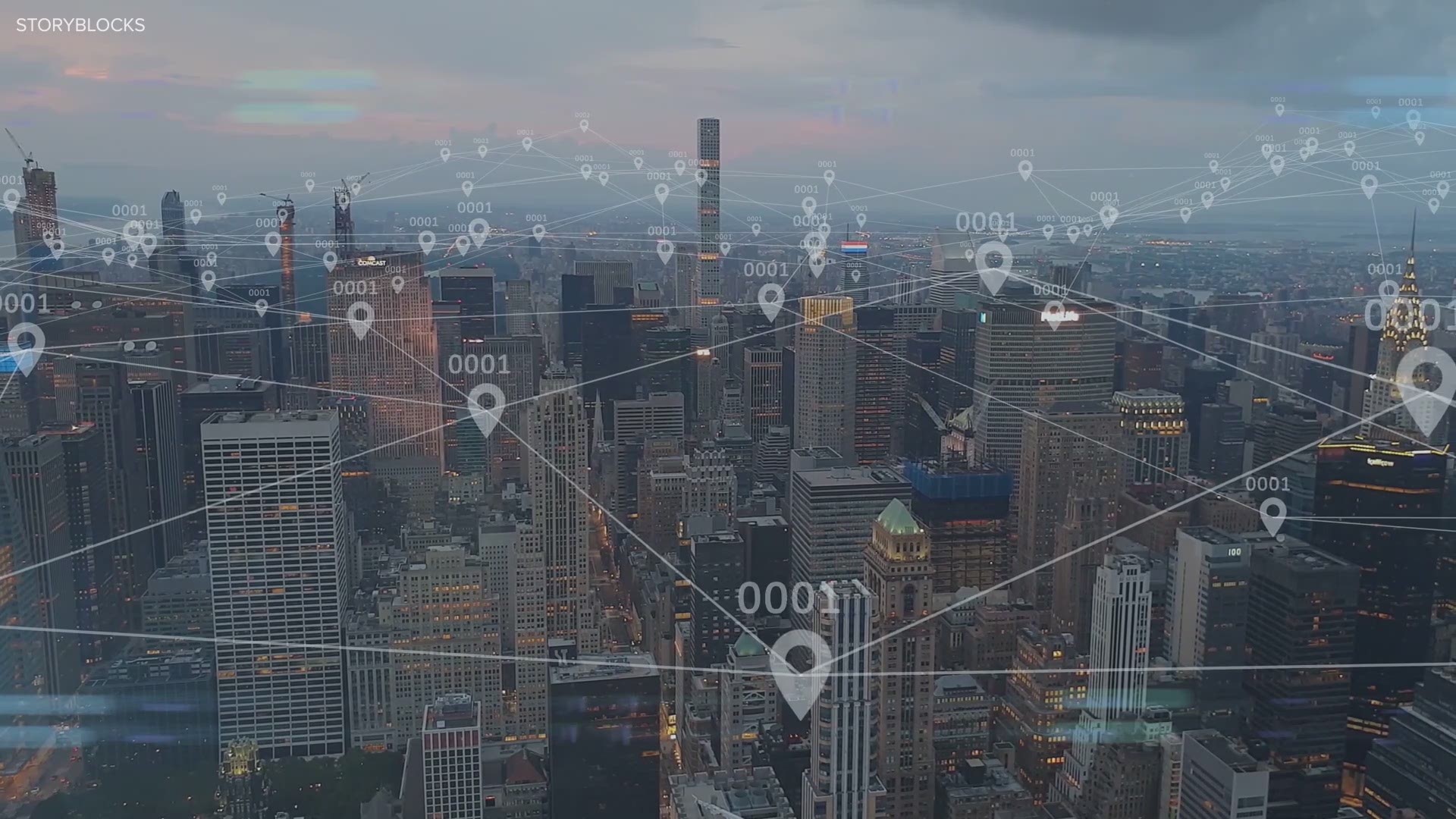LONDON, UK — Nations and U.S. states have begun easing coronavirus lockdowns, each pursuing their own approach but all with a common goal: restarting their economies without triggering another surge of infections.
Restrictions are being lifted piecemeal with no clear signs of coordination among countries. Some have restarted construction work, while others never shut it down in the first place. Hair salons and restaurants were reopening in some U.S. states, while elsewhere such steps are weeks away.
British Prime Minister Boris Johnson was back at work Monday after a bout with the virus that by his own account nearly cost the 55-year-old his life.
Johnson said Britain was starting to “turn the tide” on the outbreak but added “it is also the moment of maximum risk” because easing the lockdown that now lasts until May 7 could produce a spike in infections.
“I refuse to throw away all the effort and the sacrifice of the British people and to risk a second major outbreak and huge loss of life and the overwhelming of the NHS (National Health Service),” he said. “I ask you to contain your impatience."
Technology is likely to play an important role in helping countries ease their restrictions. Many governments are working on mobile virus-tracking apps and other technology, keen for automated solutions to the time-consuming task of tracing an infected person’s contacts.
The apps use either geo-location data or Bluetooth technology to detect when a user comes near an infected person. But activists and researchers worry that temporary measures to increase surveillance may become permanent.
“We can’t allow our response to this pandemic to be used as a justification for compromising people’s digital safety and security,” said Michael Kleinman, director of Amnesty International’s Silicon Valley Initiative.
In Australia, which has had few COVID-19 deaths, Chief Health Officer Damian Murphy said Monday he was “really excited” by the early popularity of an app designed to accelerate contact tracing.
Within 12 hours of the Australian-developed COVIDsafe app becoming available, 1.13 million of Australia’s 26 million people had downloaded it onto their smartphones, despite some privacy concerns.
Australian officials intend to outlaw using the collected data for purposes other than tracing potential COVID-19 cases. They have also promised to release the app’s source code within two weeks so independent analysts can better understand how it works.
The government says at least 40% of Australia's population needs to use the technology based on Singapore’s TraceTogether app for it to be effective. Authorities hope the app will help Australia, which has 83 recorded coronavirus deaths, safely reopen the economy by enabling health officials to quickly identify and contain new outbreaks.
Singapore was among the first to launch its contact-tracing app. Other countries, including France, Switzerland and Britain, are also developing their own.
South Korea will be issuing special electronic wristbands to alert officials if people under quarantine try to leave their homes. Hong Kong has also been issuing quarantine wristbands to arrivals to ensure they stay indoors during their mandatory two-week quarantine.
European countries, where privacy rights are generally strong, were taking a more cautious approach.
Italy's app, developed by the Milan-based tech company Bending Spoons, will be voluntary. As an incentive, officials are pitching it as a way for Italians to communicate remotely with their doctors, and warn it will only be effective if more than 60% of Italians use it.
Government officials have assured Italians their data will be kept in Italy, on a government platform that respects all national and European Union privacy norms.
Seven weeks into Italy’s strict lockdown, Premier Giuseppe Conte laid out a long-awaited timetable for easing restrictions. Factories, construction sites and wholesale supply businesses can resume when they implement safety measures.
From May 4 parks and gardens will reopen, funerals will be allowed, athletes can resume training, and people can visit relatives in the same region. Stores and museums reopen May 18, and restaurants, cafes and salons on June 1.
Professional sports teams can resume training on May 18, meaning the Serie A soccer league could resume games in June.
Spain's Prime Minister Pedro Sanchez was to present details for the “de-escalation” of his country’s lockdown Tuesday, but said it would be cautious. His French and Greek counterparts were also unveiling their reopening plans Tuesday.
Spain's easing of restrictions kicked off Sunday as children under 14 were allowed to leave their homes for the first time in six weeks. Health authorities urged parents to be responsible after some beach fronts and city promenades filled up with families.
“The impact in the epidemic can be a step backwards that can be much harder than what we have seen until now,” warned Fernando Simón, head of Spain’s health emergency coordination center.
The Czech Republic, another country with few COVID-19 deaths, was also easing restrictions, opening smaller stores, zoos, botanical parks, fitness centers and driving schools. Public gatherings of up 10 people were allowed but social distancing and face masks remainedmandatory.
In a boost for the economy, the three Czech plants of Skoda Auto belonging to Germany’s carmaker Volkswagen renewed production Monday. The company employs some 34,000 people.


The virus's official death toll neared 207,000 worldwide, with almost 3 million confirmed infections, according to a tally by Johns Hopkins University. The pandemic's true toll is believed to be much higher, because of inadequate testing, differences in counting the dead and some governments concealing the extent of their outbreaks.
The U.S. death toll was nearly 55,000 — close to the 58,000 U.S. troops killed during the entire Vietnam War. Italy, Britain, Spain and France accounted for more than 20,000 deaths each.
There were some encouraging signs, as Italy recorded its lowest 24-hour number of deaths since mid-March, with 260. New York state registered its fewest since late last month, with 367.
In China, state-run media said hospitals in Wuhan, the pandemic's original epicenter, no longer have any COVID-19 patients. And Japan's central bank eased monetary policy, prompting a stock market surge.
Some worry that lifting lockdown measures too soon could spark a resurgence in infections. In the U.S., the split in approaches has often been along partisan lines.
Oklahoma Gov. Kevin Stitt, a Republican, said with hospitalizations dropping, he will reopen churches and restaurant dining Friday while keeping social-distancing guidelines.
But Michigan Gov. Gretchen Whitmer, a Democrat, told ABC her state is not ready and needs more robust testing, community tracing and a plan for isolating the sick.
“We’ve got to be nimble and we have to follow the science and be really smart about how we reengage,” she said.

